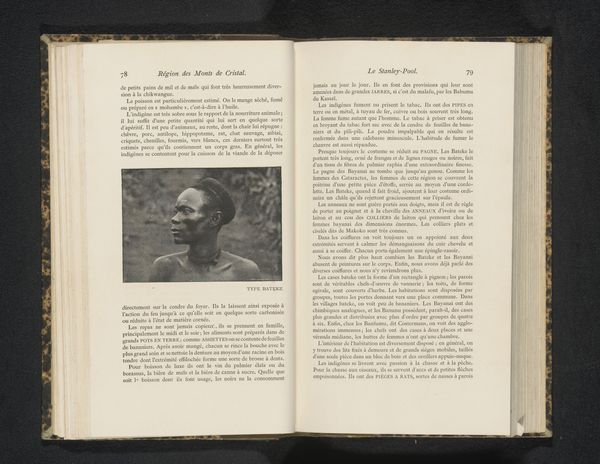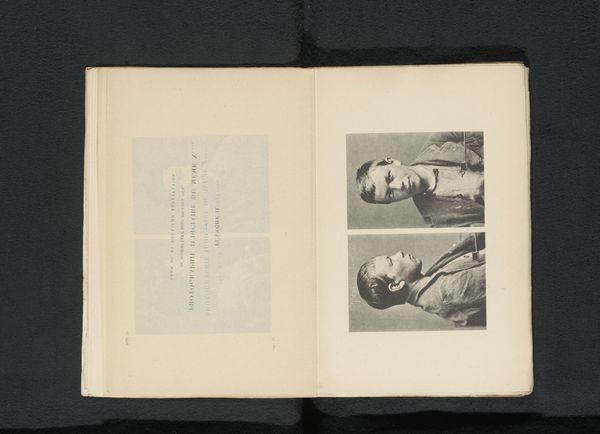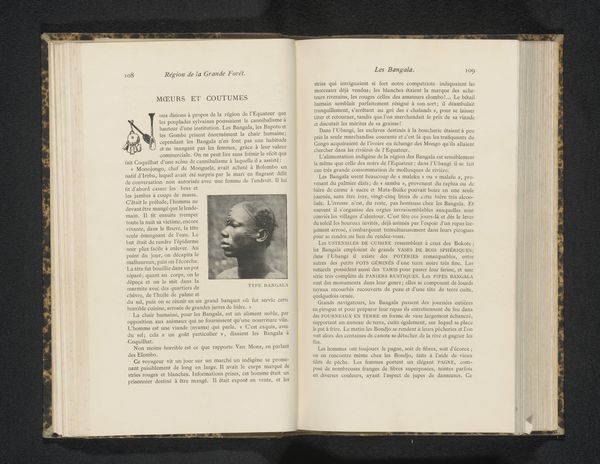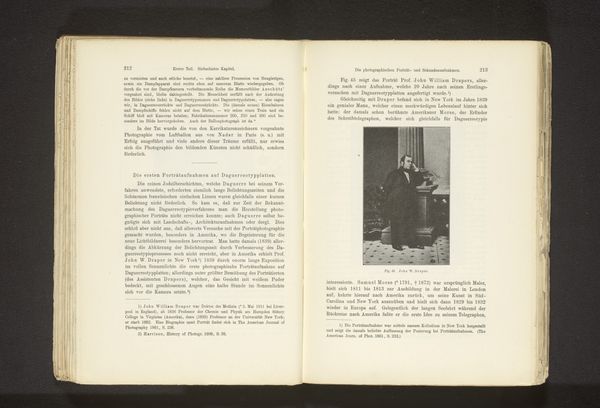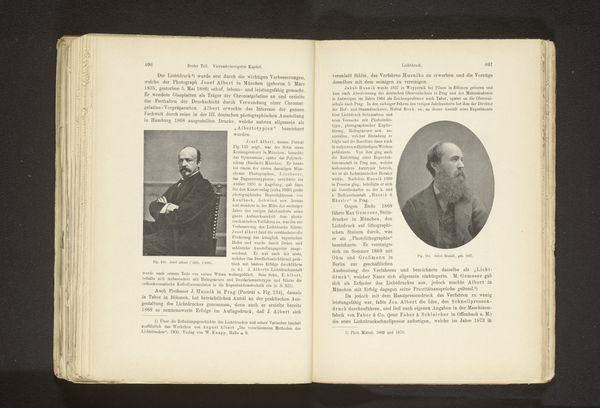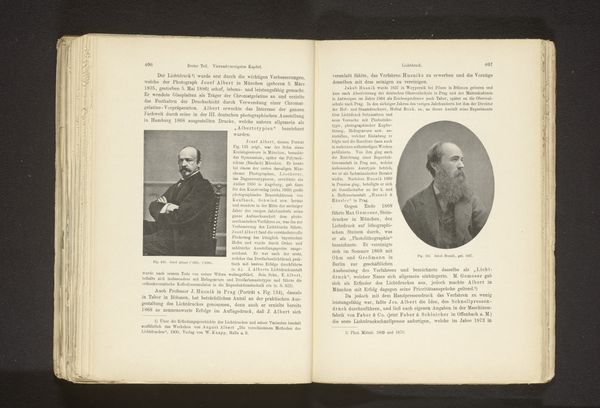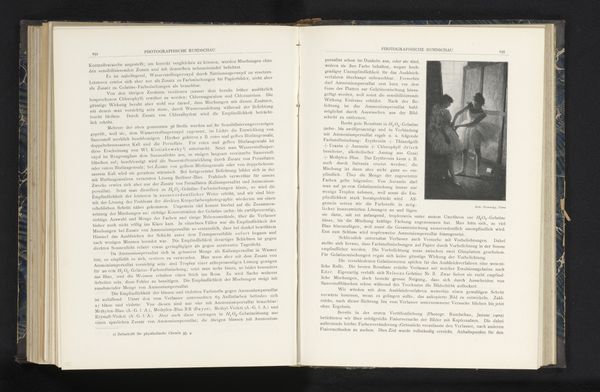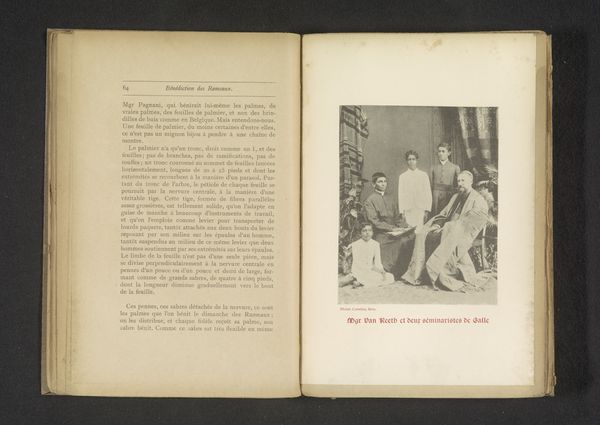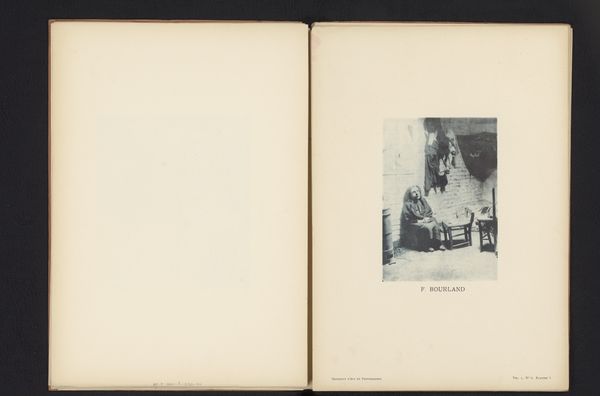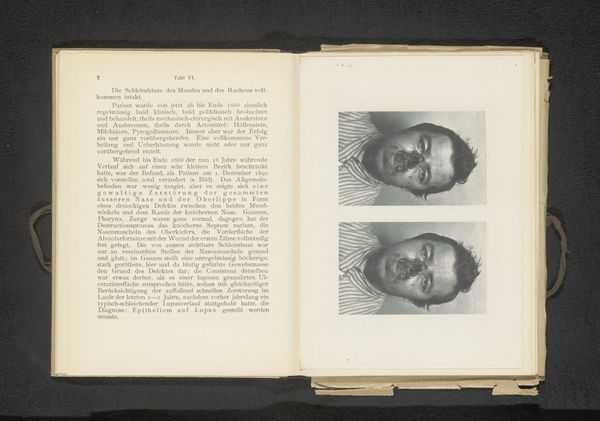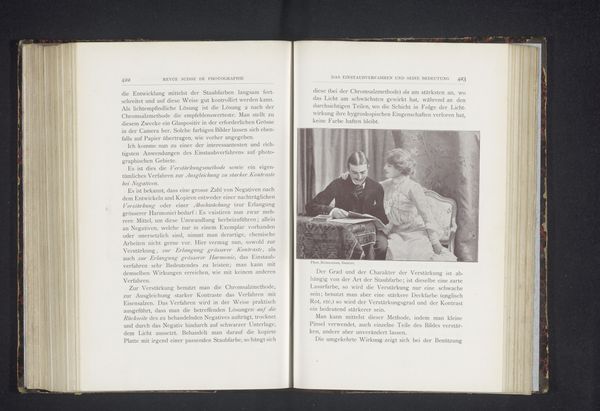
photography, gelatin-silver-print
#
portrait
#
photography
#
gelatin-silver-print
#
indigenous-americas
Dimensions: height 87 mm, width 140 mm
Copyright: Rijks Museum: Open Domain
Curator: These gelatin-silver prints, dating roughly between 1887 and 1907, present "Twee portretten van een Seneca-man"—or "Two Portraits of a Seneca Man"—by Ch. Ehrmann. They're academic in style and speak to photography’s anthropological applications during that period. Editor: My initial impression is one of… detachment. The dual presentation, front and profile, feels very clinical, like specimens pinned to a board. It's almost dehumanizing in its attempt to categorize. Curator: It reflects the period’s problematic approach to studying Indigenous peoples. Photography was seen as an objective tool, a way to document and classify different “races.” The side-by-side presentation reinforces the idea of objective study. The focus here is not individuality, but type. Editor: Absolutely. He's dressed in what looks like Western clothing, a suit. How do you think this costuming influences how we read his identity, particularly within the framework of these scientific aims? It seems to be stripping him of his cultural specificity and assimilation becomes another data point. Curator: That is a pivotal detail. The suit imposes a sense of conformity that undermines any inherent idea of authentic self. The clothing serves to position him within a narrative of assimilation and subjugation and underscores the forced cultural shifts impacting Indigenous communities at the time. This act of photographing and "scientifically" capturing him is another layer of cultural extraction. Editor: It's such a loaded image, isn't it? Looking beyond that now, I find a deep resilience etched in his gaze, especially in the frontal view. A sort of quiet resistance. I start to wonder who this individual was beyond the scientific ambitions. Curator: You bring an important nuance to this. He becomes more than a specimen, even if just in our speculation. He possesses a humanity that transcends the frame. Photography captures not only the superficial but reveals something deeper, even despite the aims and motives of the photographer. Editor: For me, engaging with art like this forces me to think about image construction itself, and how powerful of an instrument art is in influencing opinions or documenting important events, people and places in time. It is always important to read into any image from history with critical thought, which is something I did not immediately register upon viewing this image. Curator: Likewise. The image has shifted for me through this brief exchange – no longer a record but a mirror, reflecting our own contemporary examination of its layered contexts.
Comments
No comments
Be the first to comment and join the conversation on the ultimate creative platform.
